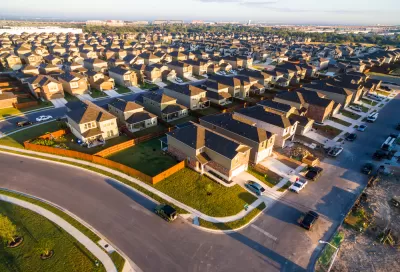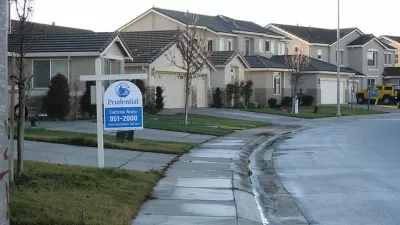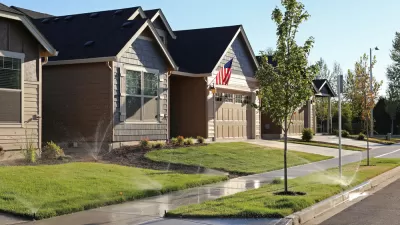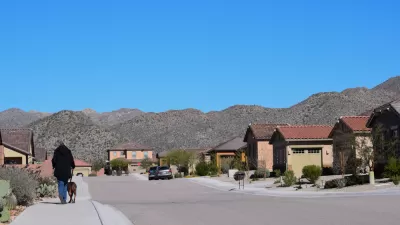New research documents the growing footprint of large institutional investors in the housing market during the pandemic, converting more and more of the nation's single-family detached housing units into rental properties.

Researchers from the University of California, Berkeley, recently published a report that documents the changes in the single-family rental (SFR) industry—as fueled by the demographic and economic trends of the pandemic and the earlier foreclosure crisis and Great Recession as well as increasing investments from large institutional investors.
“The four largest public and private SFR operators together control over 200,000 homes, and the SFR asset class has boomed in the pandemic, drawing interest from a wide range of investors and spawning new business models and partnerships,” according to the study’s asset.
Using SEC filings and quarterly investor calls from the leading SFR industry companies, the report traces how institutional narratives and market strategies have changed since the Great Recession.
“As the pool of foreclosed properties has largely dried up, SFR companies are developing new strategies to increase growth and returns for shareholders, including build-for rent and partnerships with builders. During the COVID-19 pandemic, corporate SFR landlords pushed major rent increases and devoted energy to increasing revenues through ancillary fees that further add to tenants’ housing costs. Corporate landlords are actively finding ways to cut down costs, particularly through technology and the built environment of homes, as well as appealing property tax assessments.” (Fields and Vergerio)
Totaling nearly 60 pages, the report is expansive, laying out the timeline and identifying the key industry players in this market trend with the potential to completely upend the housing market and the U.S. economy.
As a response to the growing power imbalance evidenced by the trends examined in the report, the authors recommend several steps, with more detail in the report:
- Fostering greater transparency of property ownership and rental practices.
- Implementing broad-based tenant protections.
- Considering limitations on the market share of corporate landlords.
The last recommendation would create a potentially explosive controversy, hence the addition of the word "consider" in the recommendation. Still, the report's authors argue that the regions with the largest number of institutionally-owned single-family rental homes have more of a reason to consider such drastic measures than others.
FULL STORY: Corporate landlords and market power: What does the single-family rental boom mean for our housing future?

Study: Maui’s Plan to Convert Vacation Rentals to Long-Term Housing Could Cause Nearly $1 Billion Economic Loss
The plan would reduce visitor accommodation by 25,% resulting in 1,900 jobs lost.

North Texas Transit Leaders Tout Benefits of TOD for Growing Region
At a summit focused on transit-oriented development, policymakers discussed how North Texas’ expanded light rail system can serve as a tool for economic growth.

Using Old Oil and Gas Wells for Green Energy Storage
Penn State researchers have found that repurposing abandoned oil and gas wells for geothermal-assisted compressed-air energy storage can boost efficiency, reduce environmental risks, and support clean energy and job transitions.

Private Donations Propel Early Restoration of Palisades Playground
Los Angeles has secured over $1.3 million in private funding to restore the Pacific Palisades playground months ahead of schedule, creating a modern, accessible space that supports community healing after recent wildfires.

From Blight to Benefit: Early Results From California’s Equitable Cleanup Program
The Equitable Community Revitalization Grant (ECRG) program is reshaping brownfield redevelopment by prioritizing projects in low-income and environmental justice communities, emphasizing equity, transparency, and community benefits.

Planting Relief: Tackling Las Vegas Heat One Tree at a Time
Nevada Plants, a Las Vegas-based nonprofit, is combating the city’s extreme urban heat by giving away trees to residents in underserved neighborhoods, promoting shade, sustainability, and community health.
Urban Design for Planners 1: Software Tools
This six-course series explores essential urban design concepts using open source software and equips planners with the tools they need to participate fully in the urban design process.
Planning for Universal Design
Learn the tools for implementing Universal Design in planning regulations.
Ascent Environmental
Borough of Carlisle
Institute for Housing and Urban Development Studies (IHS)
City of Grandview
Harvard GSD Executive Education
Toledo-Lucas County Plan Commissions
Salt Lake City
NYU Wagner Graduate School of Public Service





























